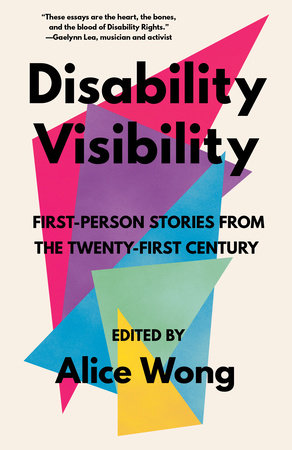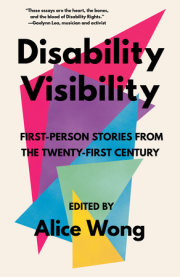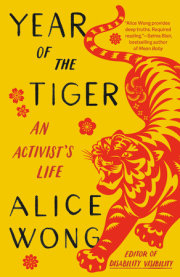Introduction by Alice Wong
PART 1: BEING
Unspeakable Conversations
Harriet McBryde Johnson
For Ki’tay D. Davidson, Who Loves Us
Talila A. Lewis
If You Can’t Fast, Give
Maysoon Zayid
There’s a Mathematical Equation That Proves I’m Ugly—Or So I Learned in My Seventh-Grade Art Class
Ariel Henley
The Erasure of Indigenous People in Chronic Illness
Jen Deerinwater
When You Are Waiting to Be Healed
June Eric-Udorie
The Isolation of Being Deaf in Prison
Jeremy Woody, as told to Christie Thompson
Common Cyborg
Jillian Weise
I’m Tired of Chasing a Cure
Liz Moore
PART 2: BECOMING
We Can’t Go Back
Ricardo T. Thornton Sr.
Radical Visibility: A Disabled Queer Clothing Reform Movement Manifesto
Sky Cubacub
Guide Dogs Don’t Lead Blind People. We Wander as One.
Haben Girma
Taking Charge of My Story as a Cancer Patient at the Hospital Where I Work
Diana Cejas
Canfei to Canji: The Freedom of Being Loud
Sandy Ho
Nurturing Black Disabled Joy
Keah Brown
Last but Not Least — Embracing Asexuality
Keshia Scott
Imposter Syndrome and Parenting with a Disability
Jessica Slice
How to Make a Paper Crane from Rage
Elsa Sjunneson
Selma Blair Became a Disabled Icon Overnight. Here’s Why We Need More Stories Like Hers.
Zipporah Arielle
PART 3: DOING
Why My Novel Is Dedicated to My Disabled Friend Maddy
A. H. Reaume
The Antiabortion Bill You Aren’t Hearing About
Rebecca Cokley
So. Not. Broken.
Alice Sheppard
How a Blind Astronomer Found a Way to Hear the Stars
Wanda Díaz-Merced
Incontinence Is a Public Health Issue—And We Need to Talk About It
Mari Ramsawakh
Falling/Burning: Hannah Gadsby, Nanette, and Being a Bipolar Creator
Shoshana Kessock
Six Ways of Looking at Crip Time
Ellen Samuels
Lost Cause
Reyma McCoy McDeid
On NYC’s Paratransit, Fighting for Safety, Respect, and Human Dignity
Britney Wilson
Gaining Power through Communication Access
Lateef McLeod
PART 4: CONNECTING
The Fearless Benjamin Lay: Activist, Abolitionist, Dwarf Person
Eugene Grant
To Survive Climate Catastrophe, Look to Queer and Disabled Folks
Patty Berne, as told to and edited by Vanessa Raditz
Disability Solidarity: Completing the “Vision for Black Lives”
Harriet Tubman Collective
Time’s Up for Me, Too
Karolyn Gehrig
Still Dreaming Wild Disability Justice Dreams at the End of the World
Leah Lakshmi Piepzna- Samarasinha
Love Means Never Having to Say . . . Anything
Jamison Hill
On the Ancestral Plane: Crip Hand- Me Downs and the Legacy of Our Movements
Stacey Milbern
The Beauty of Spaces Created for and by Disabled People
s.e. smith
About the Editor
About the Contributors
Further Reading











